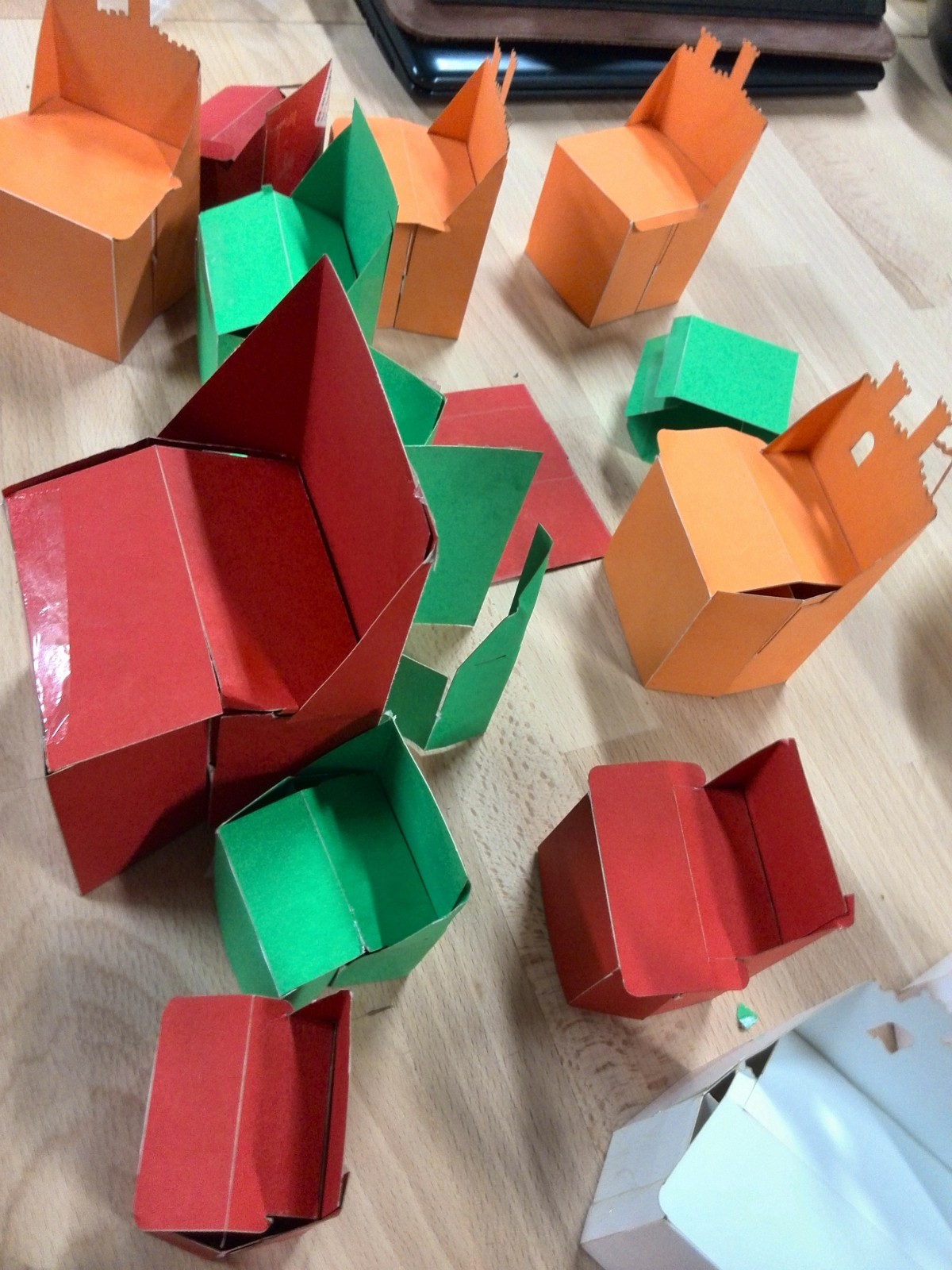The architecture program at Waterloo imposes a transitory lifestyle on its students. Every four months we unpack and repack our living spaces to head back to school or travel across the world for an internship or an exchange. Each time we must evaluate what we need to take with us, trying to avoid heavy luggage and bulky furniture.
Inspired by the challenges of architecture students, Waterloo graduate Geoff Christou launched “Room in a Box”, a solution to continuous mobility and unfurnished apartments. “Room in a Box” is a kit of collapsible, cardboard furniture that can supply an individual with a bed, surface for working, as well as storage.
Below is a promotional video with all the capabilities of the furniture set and an interview with Geoff about his design process and what led up to it.
J: I’m aware that you worked with a number of Waterloo Architecture grads on this project. I was wondering if you could describe how the Waterloo Architecture community has been a part of this process.
G: The Waterloo Architecture community inspired the idea! After my undergraduate degree I took some time to travel and think. It was while I was reflecting on how many of my friends had lived in unfurnished apartments in New York, London, and other sundry places that the initial idea for Our Paper Life came to me. The “Room in a Box” is meant to solve the problem by providing a simple, easy to ship, assemble, and dis-assemble, and entirely complete furniture solution for students who are mobile, environmentally-conscious, frankly it’s for UW Architecture Students.
J: In your opinion, what was the most important part of the your education at UW that helped you start your business?
G: The most important project for me was the 2B Dining Pavilion. In this project my naive “ideas” and “intentions” about scale, materiality, and design met the harsh (though in the end seductive) realities of manufacturing and physics. It also challenged and inspired me to work with a team to overcome not only our own disagreements about aesthetics, but also to overcome the real and manifest failures and oversights in our design (i.e if it falls over or collapses, then regardless of “aesthetic” it has failed to do its job). It was well and good for me as an architecture student to live with my head in the clouds of the imagination.. and to become adept at making things “look like they work”, i.e to “render” good design… but the Pavilion Project taught me that until I knew how to build, my ideas would be constantly at odds with the objects, installations I created. Since then I’ve found that when you do not know what you are doing then you have a stressful, anxious, and ultimately painful project experience. If you know what you are doing, then the project can be completed seamlessly and to the satisfaction of everyone involved. After this project I set about making a lot more installations and objects, and thereby learned how to use wood, metal, and paper by building and prototyping.
J: How were the prototypes in the promotional video made, and how was raising money for the die cutters in the production different from what you have produced so far?
G: We make our prototypes by using a large format UV printer, and a CNC cutting/scoring table with an optical eye. The blanks we use are white 60″x96″ triple-flute cardboard sheets. We order these from a supplier in Burlington and store them at our printers. This method is very inefficient and costly compared to other methods of production. Die cutting, as the name implies, involves making a die and using it to cut material out. The die for the desk is a large 6′ long drum with curving razor blades mounted in its curving-surface. The cardboard is fed through a machine on which is mounted the die, and is cut out as it rolls through. The problem with dies is that they are expensive and cannot be changed. We have many dies at manufacturers in Ontario, however for “Room in a Box,” we decided to ask our customers whether they were interested in the product before committing to the dies.
J: Many Waterloo students have taken part in Nuit Blanche events; how were you able to build off of your work for the Luminato Festival to help grow your company beyond the event?
G: Every project you do is one more opportunity to learn how to work with materials and manufacturing methods, build your network, and add another thing in your portfolio. At the time Luminato contacted us we had a modest portfolio of projects, and had a strong network of personal relationships with manufacturers and suppliers in Ontario. This network allowed us to take on the Cardboard Beach project on their very short timeline and deliver it on budget. Afterwards we had the same network of suppliers and manufacturers, some good press coverage, a lot of experience, and an interesting project for our portfolio… this obviously helps with getting future projects, though the hustle is continuous.
J: How did you prototype the furniture, and did you have any progress/unsuccessful iterations that helped lead to the “Room in a box” or ideas for the future?
G: All the pieces in “Room in a Box” are the result of hundreds of miniature paper models. I begin prototyping with a piece of paper, scissors, tape, and staples. As I develop the idea I will use a mini-vinyl cutter that I bought for $200 in 4A, to make miniature, yet accurate paper models from digital cut-files, (I’ve also used Hot Pop Factory to laser cut). Once the object seems to work I use a large format CNC cutting/scoring table and do it out of the large cardboard sheets.
More of Geoff’s work can be found on his website here.



Leave a Reply